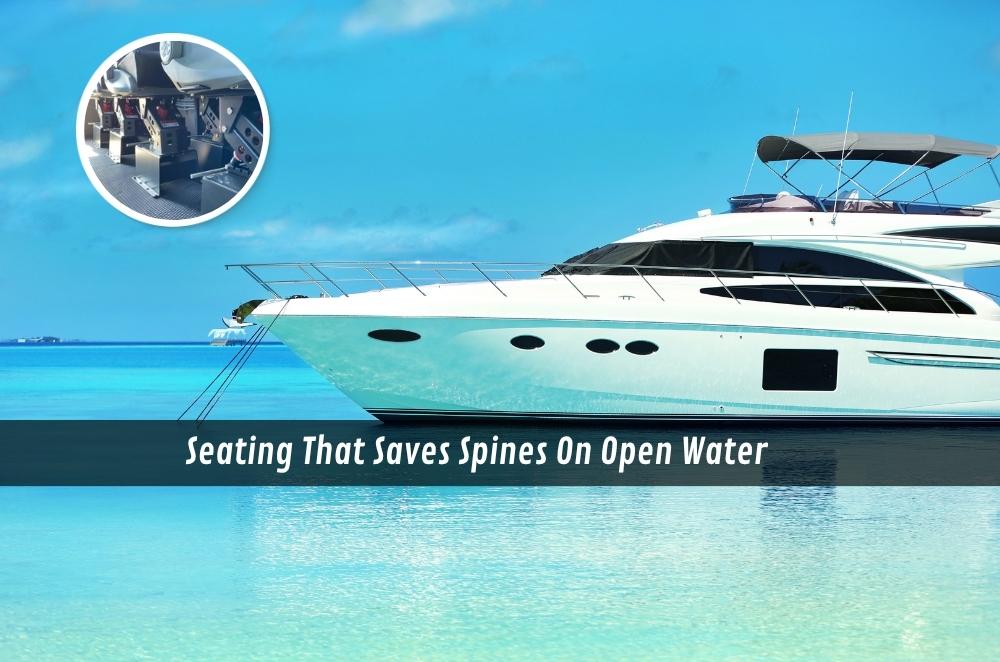Seating That Saves Spines On Open Water

Open water hands out punishment, and ordinary chairs make you pay for it. That’s why a boat seat suspension system matters more than any flashy gadget on deck. We’re talking fewer jarred backs, steadier hands on the throttle, and longer days without the limp home. Fit it once, and you feel the difference every chop, every crossing, every long swell. Not because it’s fancy, but because it turns shock into margin. We’ve tested enough gear to know: comfort isn’t a luxury offshore; it’s safety, stamina, and better decisions when things turn messy. Start with the seat, and the rest of the fitout simply works—trip after trip, no regrets ever.
How do quality seats cut fatigue?
Quality seats cut fatigue by absorbing impact before it reaches the spine. The result is steadier control and fewer errors as hours stack up.
Suspension, ergonomics, and adjustability do the heavy lifting. A good base isolates vertical hits while the backrest and pan shape stop the body from bracing against every bump. You stay loose, which keeps reaction times sharp and blood moving. Pair that with adjustable travel and damping, and you can tune the seat to boat weight, crew, and sea state. That tuning is what turns a hard day into a sustainable one, especially on centre consoles and fast trailer boats.
-
Suspension cushions micro shocks that cause muscle bracing.
-
Ergonomic shaping spreads the load across the hips and thighs.
-
Height and travel adjustment preserve neutral posture.
Consistent performance also depends on seat care for boats, covering materials, cleaning intervals, and how the seats are stored during the off-season.
What specs matter in rough seas?
The specs that matter most in rough seas are travel, damping range, and corrosion resistance. They keep mechanisms responsive when conditions go from sloppy to savage.
Vertical travel sets how much shock you can absorb before bottoming out. Around 80 to 120 mm suits mixed conditions; heavier hulls may want more. Independent rebound and compression damping stop pogoing, so the helm does not yo-yo after hits. Hardware needs to shrug off salt: marine-grade stainless fasteners, anodised aluminium frames, sealed bearings. Foams and covers must ignore spray and sun. Closed cell cushions and UV stable textiles prevent waterlogging and that cracked, chalky look that arrives mid-season.
When should you upgrade the helm?
You should upgrade the helm when comfort, posture, or focus start to slip on long runs. If the crew share back pain stories after a weekend, you’re overdue.
The tell-tales are simple: you stand to avoid sitting, hands buzz after a long run, or the boat noses off line. Modern suspension seating fixes those behaviours and, just as important, wins back time on the water. It also protects resale by keeping upholstery tight and hardware rattle-free. Make it the first upgrade before electronics and trim tabs. Comfort buys awareness; awareness prevents mistakes when weather shifts or traffic thickens near the heads. Factor in local conditions—bar crossings, long tidal slogs, and afternoon sea breezes—and spec the mechanism to your heaviest days, not the calm mornings. Thoughtful design and advances in marine seating technology continue to shape how modern boats handle fatigue and comfort at sea.
Final thoughts
Comfort on the water isn’t a luxury—it’s an edge. The right suspension seat keeps every run safer, steadier, and far less taxing on the body. Over time, it’s what separates the skipper who lasts all day from the one nursing sore joints before lunch. Invest in the seat first; it’s the foundation for every smooth, controlled, and confident passage you’ll make from here on.








